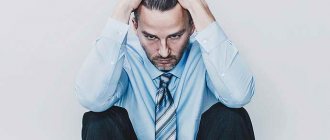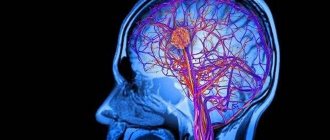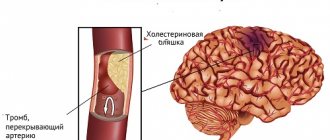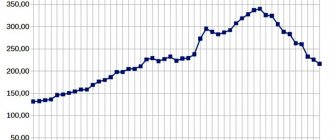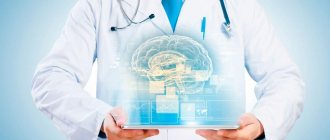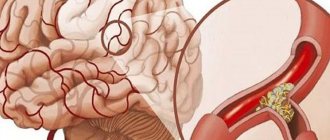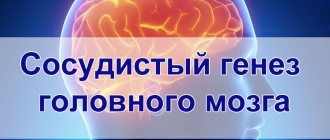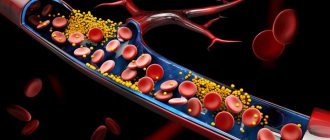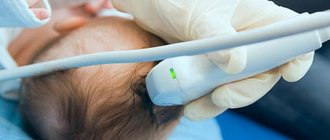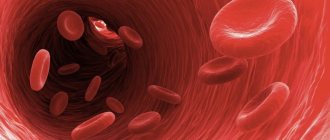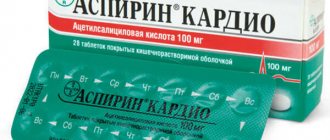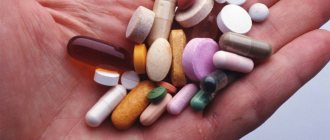Effectiveness of drug therapy
Before you understand what the patient will need, you need to know the features that accompany a violation of cerebral blood flow.
Regardless of the type of lesion, the brain undergoes serious changes.
As for all kinds of medications, they are prescribed to treat the disease and prevent relapse. The therapy itself has the following goals:
- anesthesia;
- formation of a local type pathological focus;
- prevention of relapse.
Important! In the case of a hemorrhagic type of disease, medications are started to be used only after the hemorrhage has been eliminated.
Treatment of the ischemic form involves the rapid restoration of the affected brain tissue, and this is reflected in the degree of adaptation of a person to the outside world.
Literature
- Kadomtsev D.V. Thrombolytic therapy for ischemic stroke. current state of the problem, 2016
- N.V. Vereshchagin and others. Principles of diagnosis and treatment of patients with acute cerebrovascular accidents, 2002
- Sandercock PAG, Counsell C, Kane EJ. Anticoagulants for acute ischemic stroke, 2015
Irina Kostyleva
Higher medical education. Kirov State Medical Academy (KSMA). Local therapist. More about the author
All articles by the author
Drug therapy regimen
The list of the best medicines depends on the degree of tissue damage and the stage of diagnosis of the disease. Therapeutic goals are also important.
The doctor chooses a specific course, paying attention to the patient’s condition and the degree of progression of irreversible changes. In this case, self-medication is strictly unacceptable, since an error in dosing can lead to dangerous complications.
The general principles are:
- at the first stage of the disease, it is important to use drugs aimed at preventing its further development;
- when blood pressure is significantly exceeded, antihypertensive drugs are prescribed;
- To protect nerve cells, they take nootropic drugs. Usually, when using them, no side effects are observed; they improve cerebral circulation. As for the duration of treatment, this is a purely individual question;
- a course of vitamin complexes and sedatives, especially if there is frequent stress and fatigue.
Important! You cannot deviate from the instructions given by the doctor.
First aid
It is believed that the acute phase is the first 2-3 hours after the attack occurs. This is a critical time for the patient. It is during this period that you need to use certain medications that localize the causes of the developing pathology.
Injections and tablets are responsible for restoring a viable blood supply. Drugs that promote good blood clotting should be urgently prescribed.
Reference! Scientists have proven that Actovegin for stroke after the first two to three hours reduces the intensity of paralysis.
In the first hours, painkillers and injections are used. The patient is discharged from the hospital when the condition has completely stabilized, but treatment continues at home. Sometimes older people have to take certain medications for the rest of their lives.
The course of therapy is individual. The patient often takes antidepressants because there is a constant feeling of anxiety and fear of a repetition of the situation.
Dangerous complications
Lack of adequate treatment for seizures after stroke can cause complications. Such patients are at risk:
- Repeated stroke, which not everyone manages to survive;
- Comatose state - attacks of muscle spasms lead first to a short-term and then to a longer loss of consciousness. With frequently recurring seizures, the patient falls into a coma;
- Loss of ability to work - the regular occurrence of seizures that do not disappear when taking standard medications indicates necrotization of large areas of the brain. Rehabilitation of such a patient is not effective, the person becomes disabled;
- Fatal outcome - constant relapses of convulsive attacks, the lack of positive dynamics during treatment indicates the likelihood of internal bleeding. It is practically impossible to eliminate this condition. Therefore the patient dies.
To prevent the development of dangerous consequences of seizures during a stroke, you should immediately seek medical help, undergo a comprehensive examination and begin treatment.
The most effective medicines
The question arises of how to treat the pathology.
There are many most effective remedies that help cope with the general symptoms of the pathology.
We are talking about the following:
- Antiplatelet agents (thinning the blood and preventing the formation of blood clots);
- a course of anticonvulsants;
- sedatives.
There are European medicines that are approved by many doctors. They have shown excellent results in stroke therapy. The following remedies are distinguished:
- Ceraxon. The active ingredient is Citicoline. It improves the metabolic processes of nerve cells. Cerebral swelling during a stroke is relieved, the work of the department responsible for cognitive activity is regulated, because a person often suffers from loss of memory and speech. Reviews about Tserakson are mostly positive;
- Gliatilin. Its purpose is used very often. In particular, there is a beneficial effect on the brain stem. Medicines are recommended for patients in a coma. If we talk about the duration of treatment, it varies from three months to six months. If necessary, the therapeutic course is repeated. Reviews about Gliatilin are mostly positive;
- Actovegin. These tablets have proven themselves to be an effective remedy against diabetes and also help in preventing stroke. They are compatible with any drugs, for example, Kotrksin, Mexidol, Cortexin, Zallex, and have good patient reviews.
Attention! The compatibility of Mexidol and Actovegin allows you to quickly restore the patient’s condition. The drugs Phenibut and Fanazepam, which normalize nervous activity, as well as the antidepressant Amitriptyline, are widely used.
What groups of drugs are prescribed?
Muscle relaxants
The most common consequences after a stroke are movement disorders.
The greatest chance of returning a person to a full life remains during the first months. It is at this time that patients experience muscle hypertonicity, leading to limitation of movement. Groups of muscle relaxants: central and peripheral action. Centrally acting muscle relaxants are used in the treatment of stroke.
Contraindications:
- allergy to medicine;
- liver failure;
- peptic ulcer.
Side effects:
- dizziness;
- drowsiness;
- nausea;
- slowing heart rate.
An overdose can cause anaphylactic shock.
Antidepressants
Rehabilitation with antidepressants affects not only mood, but also the restoration of body functions. The selection of drugs is carried out by the doctor, in accordance with the current condition of the patient and the chosen course of therapy.
Contraindications:
- kidney diseases;
- heart failure;
- urinary disturbance;
- glaucoma;
- epilepsy.
Side effects:
- sleep disturbances are possible;
- dizziness;
- tachycardia;
- headache;
- visual impairment.
Anticonvulsants
Due to necrosis of brain tissue and poor blood circulation, the patient may experience post-stroke seizures. By themselves, they are not life-threatening, but may indicate the low effectiveness of treatment and the possibility of a recurrent stroke.
The main goal is not to eliminate seizures, but to identify and eliminate the cause of the pathology. To relieve convulsions, non-steroidal and anti-inflammatory drugs with an analgesic effect are used.
Contraindications:
- liver and kidney diseases;
- pancreas.
These medications are not compatible with alcohol.
Side effects:
- dizziness and drowsiness;
- diarrhea;
- nausea.
Allergic reactions and addiction are possible.
Anticoagulants and antiplatelet agents
Anticoagulants prevent blood clots from forming, preventing thrombosis. They are often used to prevent cardiovascular diseases and are prescribed as therapy after surgery.
By preventing the conversion of protothrombin to thrombin, the drugs directly affect the proteins in blood cells. Available in the form of tablets, ointments, and injection solutions. Antiplatelet agents also thin the blood, but do it more gently. They prevent the adhesion of platelets and red blood cells. For hypertension, drugs are prescribed as preventive measures to prevent stroke.
Blood thinning medications are contraindicated in people who suffer from bleeding disorders:
- peptic ulcer;
- open form of tuberculosis, etc.
Side effects:
- nausea;
- itching;
- hematomas at injection sites;
- allergic reactions are possible.
Neurometabolic cerebroprotectors
They help preserve the functioning of brain neurons after a stroke, protect them from death, improve the supply of nerve cells, and normalize metabolism.
The following groups of neuroprotectors are distinguished:
- nootropics;
- antioxidants;
- vascular drugs;
- adapogenic substances;
- combination drugs.
Neurometabolic therapy complements the main treatment, as part of a comprehensive program.
Contraindications:
- arterial hypotension;
- individual drug intolerance.
Side effects are rare and decrease as the course continues. These include:
- a sharp drop in blood pressure;
- redness of the skin associated with dilation of capillaries;
- insomnia;
- disruption of the stomach.
Injections for recovery
What injections are usually given? It is worth mentioning an effective injection that eliminates the consequences of impaired blood flow in the brain . The active ingredient is the MASP-2 enzyme.
Doctors call the product the so-called “health protein.” It stops the development of inflammatory processes that provoke a cessation of blood flow to key tissues and organs.
Important! The injection is given only in the first two to three hours after the attack.
The above enzyme reduces the risk of post-stroke complications. The product has a high restorative effect. The injection is usually given in the peritoneal area.
An injection of magnesium is often given intravenously. It stimulates the normalization of blood pressure. Mildronate is often used for ischemic diseases.
Medicines during the recovery period
What pills should I take regularly? It is important to ensure their use during the recovery period after a stroke. If a hemorrhagic form has been identified, then it is important to normalize blood pressure using antiangial medications.
Important! Reception should be carried out only under the supervision of a doctor, in particular a neurologist and cardiologist.
What drink? The types of medicines are:
- Dibazol;
- Clonidine;
- Papaverine.
What to take for ischemic form? Drugs are usually prescribed to restore the rheological properties of blood, such as Aspirin, Heparin.
It is important to remember that a course of medication does not indicate the patient’s complete recovery. The goal is to prevent relapse and improve overall condition.
A device such as Almag is indispensable during the recovery period. Its goals are to restore activity, relieve muscle spasms, and improve motor functions.
Anticoagulants and antiplatelet agents
These two groups of medications prevent the re-formation of a blood clot and make the blood more fluid. The difference between them lies in the principle of operation. Anticoagulants block the chemicals that trigger the blood clotting mechanism, and antiplatelet agents prevent platelets from sticking together to form a blood clot. The most widely used anticoagulant medications for stroke are aspirin (acetylsalicylic acid), warfarin, clopidogrel, and heparin.
The use of these drugs can reduce the risk of ischemic stroke, pulmonary embolism, and myocardial infarction (3). Unfortunately, their use is associated with an increased likelihood of bleeding, primarily gastrointestinal, as well as hemorrhagic stroke.
Vitamin therapy
Multivitamin complexes are usually prescribed along with neuroprotectors and antiplatelet agents.
The action of these medications is aimed at restoring key brain functions.
Those who have suffered a stroke need vitamins A, B, C, and E in large quantities.
Experts insist on the usefulness of bee products and the integrity of bee bread. It consists of pollen packed to the top with honey.
Chemical elements of the products have a positive effect on the vascular walls, preventing the formation of blood clots. It is recommended to consume 5 grams of the substance per day.
Causes of seizures after a stroke
Convulsions after a stroke in men and women occur in both hemorrhagic and ischemic types of hemorrhage. An attack causes the death of cells in the nerve fibers of the brain, which leads to disruption of the transmission of neural impulses. Due to the sudden cessation of blood flow, necrotic foci develop. And the body tries to protect itself from the progression of pathology, so it directs all its efforts to restoring peripheral blood flow.
Necrotic lesions formed after a stroke irritate the nerve endings, causing cramps in the muscles of the legs and arms.
The immune response to stroke leads to the appearance of cavities in dead areas that fill with fluid. The patient does not experience pain or discomfort. However, in this condition, neurons are constantly irritated, which causes seizures.
The following can also provoke convulsions in a bedridden patient:
- Formation of a cyst in the frontal region of the brain. Such a process is dangerous due to a repeated attack of stroke;
- Attachment of a viral or bacterial infection. This can happen during surgery or during the rehabilitation period;
- Emotional stress, depression;
- High physical activity;
- Side effects from drug therapy.
Seizures after an ischemic stroke are a dangerous symptom, indicating a high risk of recurrent stroke or cerebral infarction.
Nutritional supplements
Nutritional supplements and homeopathic remedies are taken only along with elements of traditional medicine and with the prior consent of the doctor. Their action supports the general condition of the body and is preventive.
Which ones will help? Experts allow the use of additives in the form of:
- monastery tea, which restores damaged cellular organisms in the brain and prevents increased blood pressure;
- biologically active additives of the Tian-shi series . They relax the patient’s nervous system and restore natural biological reserves;
- ASD 2 France . The action of natural enterosorbent is aimed at cleansing the body of waste and toxins. Its disadvantages are the not very pleasant taste and smell;
- Papaya Attiva supplements . Its active components have a positive effect on the defenses. Taking the drug stimulates the fight against the consequences of the disease, normalizes metabolism and blood flow.
Reference! A sedative called Glycine is widely used, which is responsible for regulating the processes of inhibition and excitation of the cerebral cortex.
Typically, doctors prescribe all of the above drugs to restore metabolism in the brain matter.
Drug prophylaxis
Medical causes of the development of a cerebral stroke (hypertension, diabetes mellitus, atrial fibrillation, atherosclerosis) cannot be excluded, but can be controlled. This explains the need to take certain medications for life. Medicines to prevent stroke are:
- statins – used to control cholesterol levels;
- antihypertensive medications – prescribed to patients with hypertension;
- antiplatelet agents - reduce the likelihood of re-formation of a blood clot;
- anticonvulsants – necessary for patients with post-stroke epilepsy;
- Antiarrhythmic drugs - help maintain the normal rhythm of the heart.
Also, to prevent brain stroke, you can take nutritional supplements that duplicate the effects of drugs, but are inferior to them in terms of action:
- garlic extract;
- blueberries;
- ginseng;
- turmeric;
- omega-3 fatty acids.
They can only be used as an auxiliary treatment, after consulting with your doctor.
